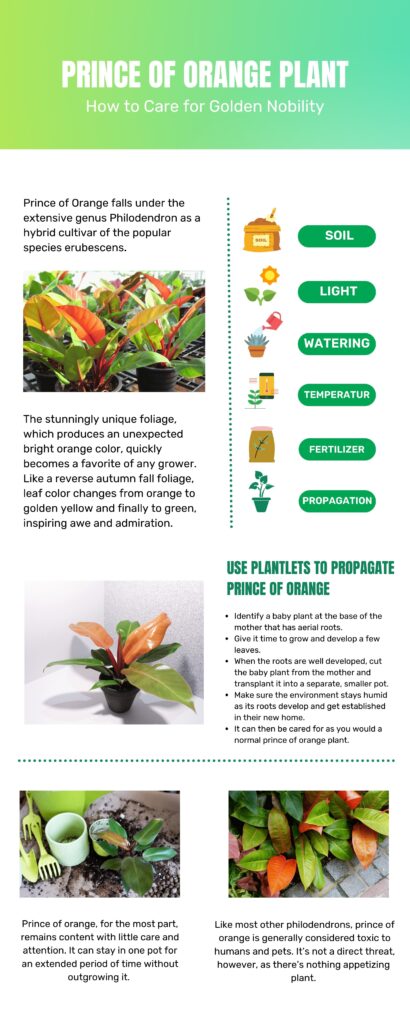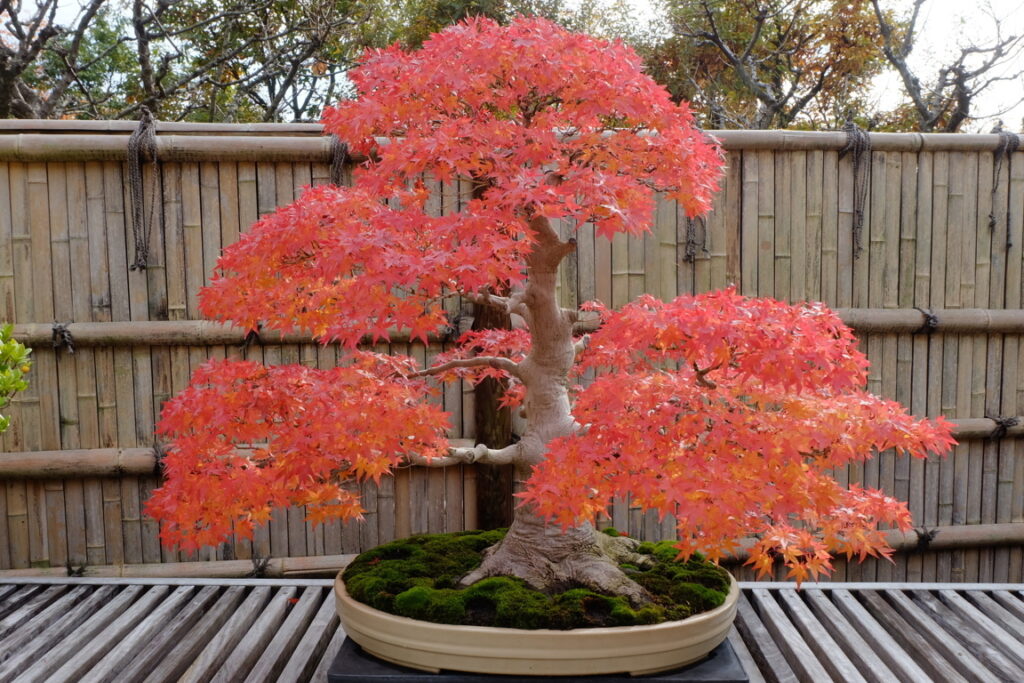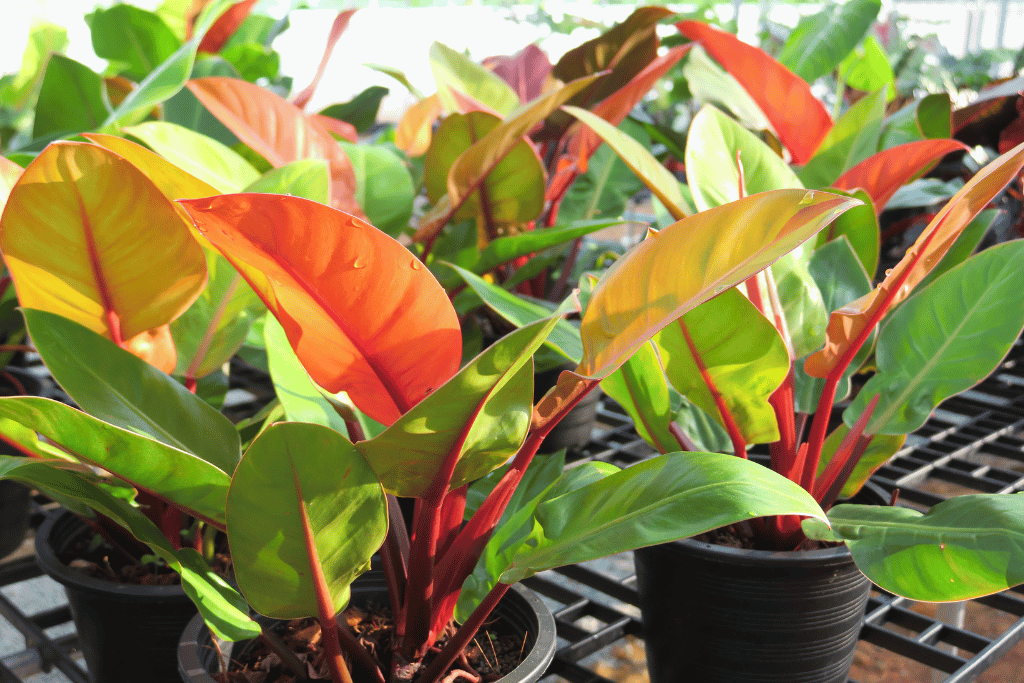
Prince of Orange falls under the extensive genus Philodendron as a hybrid cultivar of the popular species erubescens.
The stunningly unique foliage, which produces an unexpected bright orange color, quickly becomes a favorite of any grower. Like a reverse autumn fall foliage, leaf color changes from orange to golden yellow and finally to green, inspiring awe and admiration.
The compact, self-heading tropical plant is unlike other philodendrons in that it doesn’t climb but takes on a bushy shrub-like growth habit.
It grows relatively slowly, making it the perfect indoor plant as an accent in small spaces. Prince of orange can eventually grow to be 2 feet tall, depending on the size of its container and other care factors.
So, without any further introduction of the populist prince in orange, let’s find out how we can provide comfortable conditions to promote his majestic flora and accommodate his royal rank.
Soil
A loose, light, rich and well-aerated planting medium provides the best growing space for the roots of prince of orange.
Good mixes will contain ingredients that drain well, retain moisture and nourish the plant. Vermiculite, coarse sand, rice hulls or perlite can be mixed at a 1:2 ratio with soil retention elements. Peat moss, coconut coir or compost will hold water and keep the medium from drying out too quickly.
An extra handful of compost or worm castings would also help boost the organic content.
Standard succulent mixes should work well if you’re not up for concocting your own medium mix. Just add a dash of compost and coco coir to the mix for the perfect blend of nutrition, moisture retention and drainage.
Light
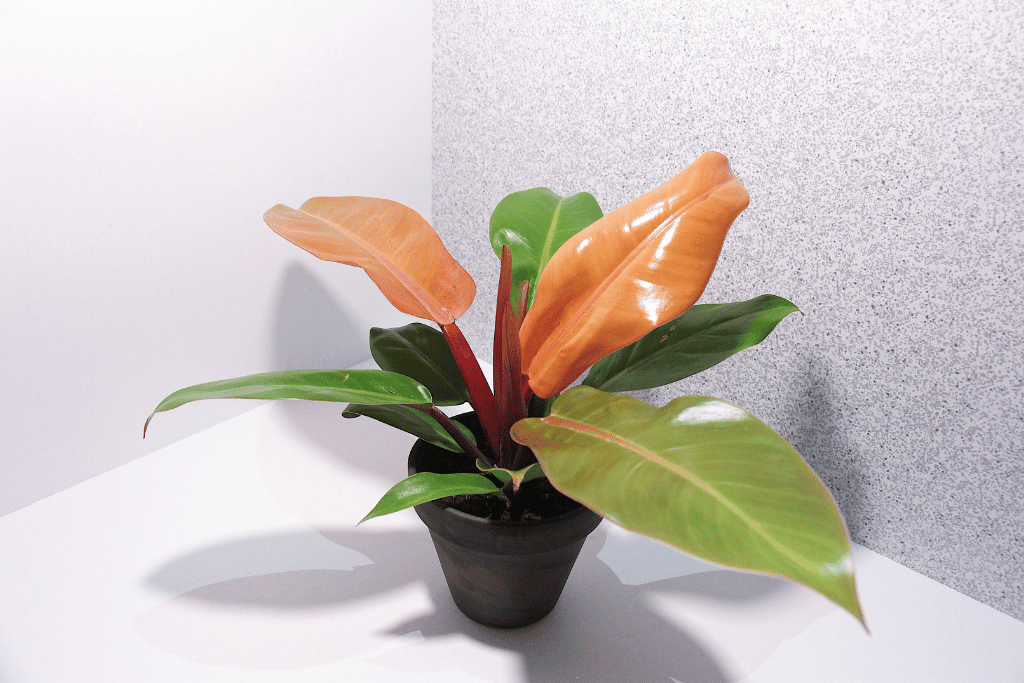
To get the most out of the fantastic foliage prince of orange has to offer it will require plenty of light.
A small amount of daily direct sunlight will really help to get those special colors popping. The early morning sun from an east-facing window is probably the best, as it is less intense than the afternoon. However, exposure to the afternoon sun for a limited time will also help the colors stand out without harming the plant.
Plenty of afternoon sun is available in west-facing window.
Thirty minutes to one hour of direct light exposure per day is enough to energize and encourage your prince of orange plant to develop its unique copper leaves. For the rest of the day, indirect light or bright shade will suffice.
Never let the light-sensitive tropical plant get exposed to the direct midday sun. It could wilt, go into shock and have its growth stunted.
The more indirect light prince of orange receives the faster it will grow. When kept exclusively in the shade, it will grow at a slower rate and you’ll miss out on some of its fantastic colorful displays.
If your area has long and cold winters with short days, consider supplementing your prince of orange plant with fluorescent or LED grow lights.
Watering
Prince of orange prefers an evenly moist growing medium. Don’t water so much that it is constantly standing in damp soil. Like most tropical plants it can stand moisture in the air better than on its roots.
When planted in a well-draining medium, prince of orange should only be watered when the top 1-2 inches dry out. This can help avoid root rot, other fungal diseases and pests like fungus gnats. Water deeply and infrequently.
During the winter months, great attention should be given to your watering schedule. You’ll have to scale it way back to make sure your prince of orange isn’t receiving too much water. As long as the medium doesn’t completely dry out, water should be applied sparingly.
If you live in a tropical region and are keeping your prince of orange outdoors, it usually needs to be watered every other day. The warmth, wind and other outdoor elements will lead to the medium drying out more quickly.
Temperature & Humidity
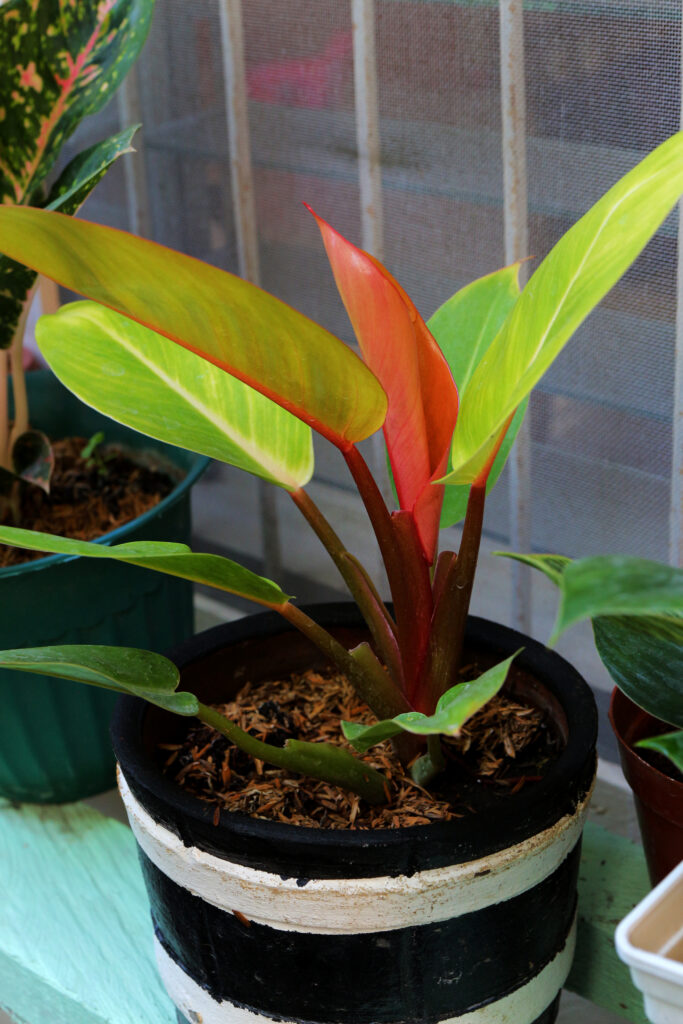
As a native of Colombia, Philodendron erubescens very much prefers warm climates. It won’t stand temperatures below 55 degrees. Ideally, the ambient temperature for your prince of orange plant will stay in the range of 65-80 degrees with little fluctuation.
To warm it up on colder days move it to a heated room or set it in brighter light. If it gets too warm, move it to less direct light and make sure it stays hydrated.
Humidity levels should be kept at least at 50%. Higher is better, as prince of orange likes being able to take in water through its leaves.
Leaves can be misted to help them remain moist. Don’t let the water sit on the leaves though, this could induce disease and pests. Mist them lightly and gently wipe them off to help keep foliage clean and photosynthesizing at the highest level.
Use a humidifier if you struggle to keep the humidity at 50% or higher. Another way to boost humidity is by making a pebble tray.
Fill a saucer with a layer of small stones or pebbles and add water. The prince of orange and its container can rest on top of the pebbles, above the water level and benefit from the moisture as it evaporates.
Fertilizer
A properly prepared, rich growing medium works well as a means of feeding your philodendron prince of orange. Organic matter like compost and earthworm castings can be added at planting and will gradually break down over time, slowly feeding and nourishing your plant.
Other than organically rich soil, prince of orange doesn’t require much fertilizing. However, regular light feeding can help promote the production of foliage with more vibrant colors.
Water-soluble fertilizers will work best, especially something like fish emulsion or liquid seaweed. Follow the instructions on the label for indoor plants but cut the recommended dose to half strength.
Overfertilizing can be extremely detrimental to plant health. It could stunt growth, contort foliage and end up killing your precious prince of orange.
During the winter season, feeding should be withheld. With very low rates of photosynthesis, your plant likely wouldn’t be able to utilize the extra nutrients, leading to a dangerous build-up.
Propagation
Because prince of orange is a hybrid and does not produce vines like other species of philodendron, it can be difficult to propagate.
Professional growers with access to special equipment and techniques can propagate prince of orange with seeds or tissue culture, but we home growers will have to seek out an alternative method.
Use Plantlets to Propagate Prince of Orange
This method is possible once you have a mature prince of orange plant.
- Identify a baby plant at the base of the mother that has aerial roots.
- Give it time to grow and develop a few leaves.
- When the roots are well developed, cut the baby plant from the mother and transplant it into a separate, smaller pot.
- Make sure the environment stays humid as its roots develop and get established in their new home.
- It can then be cared for as you would a normal prince of orange plant.
Prince of Orange Maintenance & Care
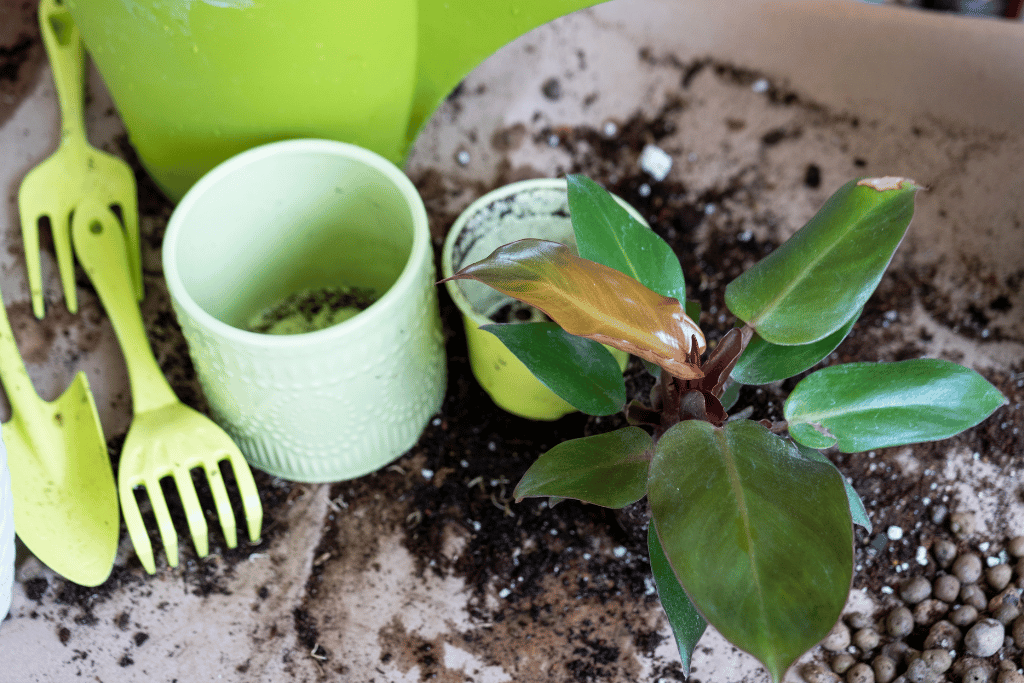
Prince of orange, for the most part, remains content with little care and attention. It can stay in one pot for an extended period of time without outgrowing it.
The rosette of brilliant foliage is somewhat like a colorful bouquet of leaves and doesn’t require pruning.
The most cutting you’ll have to do is trimming out old, spent leaves, stems and dry aerial roots. Keeping it clean and tidy will promote fresh vegetative growth. Always be sure to use sharp, sterilized shears.
When the plant gets to a mature stage, it might develop a leggy stalk. The head of the plant will reach and droop over its container’s edge. Carefully cut off the head, leaving some of the stalk intact for propagating. The base of the original plant should continue to grow after it recovers.
As mentioned above, prince of orange will grow happily in the same pot for a good while. But transplanting it up to a larger container will benefit the plant when roots get too crowded in the original pot. When it begins to get top-heavy and the growth rate slows down considerably, it’s time to repot.
Consider using a heavy container like a terracotta pot to support the increasing weight. Only transplant during spring and summer months. Potting up to a larger container should only be required once every two years.
Toxicity
Like most other philodendrons, prince of orange is generally considered toxic to humans and pets. It’s not a direct threat, however, as there’s nothing appetizing about any part of the plant. To be on the safe side, keep it out of the reach of children and curious dogs and cats.
Quick Tips
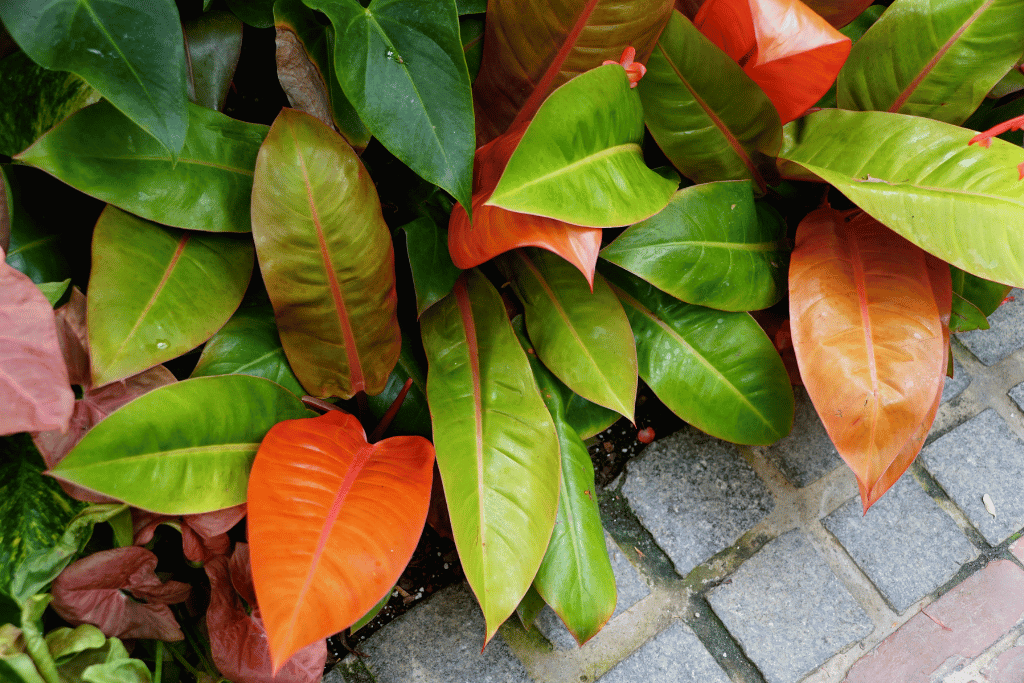
To keep your prince of orange in a noble order, follow these guidelines.
- Keep the temperature at a constant 70 degrees and never let it drop below 55 degrees.
- Indirect light, with occasional early morning direct sun, is the best formula for producing vivid foliar displays.
- Make sure soil is loose and well-draining, contains organic matter and stays evenly moist.
- High humidity will promote healthy growth.
- Mist and wipe leaves on a regular basis to remove dust and potential pests. Then, dry them off and supply good air circulation.
- Early spring, before new growth shoots up, is the best time to transplant.
- Prince of orange will grow best in a compact container that is heavy enough to keep it from tipping over.
Frequently Asked Questions (FAQ)
Can prince of orange be grown outdoors?
Typically kept as a houseplant in most areas because of its tropical nature, prince of orange is able to be cultivated outside. It can survive year-round in USDA hardiness zones 10 and 11, which include tiny portions of southern California and Florida. Keep it well-watered and out of direct sun.
Is prince of orange a rare plant?
Because it is a specialized hybrid cultivar, prince of orange can be hard to find. It can be purchased at select specialty tropical nurseries and online suppliers. They may cost more than average tropical plants due to their exclusivity.
When should I repot my prince of orange?
When you think it may be time to repot your prince of orange, check the drainage holes of its container. If the roots are starting to grow out, then it’s time to transplant. Repotting can be done every 1-2 years in the early spring.
